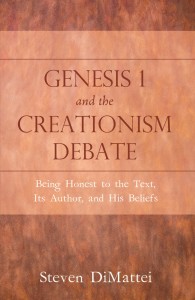This is the last post in our introduction to What is the Bible. Next we will start to look at specific biblical passages and deduce hypotheses concerning the biblical text’s composite nature.
Does the label “the Bible”—“the Book”—accurately represent its content, that is the once separate, numerous, and often competing, texts and traditions that were written over a thousand-year period by different authors, to different audiences, and to address the needs and concerns of different peoples, worldviews, and even beliefs? How could it? It is a label that by its very nature imposes a homogeneous interpretive framework onto what is then viewed as a canonical book, which was furthermore a product of a later generation of readers, who were themselves influenced by the needs, concerns, and beliefs of their own historical era.
In a very real sense, then, “the Bible” as a title for this collection of ancient texts and traditions is a misnomer. It is a prescriptive label, not a descriptive one. That is to say, the label “the Bible” does not function to describe its content; rather, it functions to prescribe an understanding of its content as a Book—as the Book in fact. It is an interpretive label imposed upon a collection of ancient texts and traditions by later generations of readers, whose interests, concerns, and religious programs were vastly different from the authors who originally penned the numerous texts and traditions, cultic laws, etiological tales, political archives, historical narratives, theological and political propaganda, poetry, hymnals, private correspondences, etc. that now make up what is labeled and marketed as “the Bible.” In actuality, the label “the Bible” misrepresents its content. It prejudices an understanding of the various texts and traditions that make up its content by innocuously claiming, prior to even examining its content, that it is a book. In truth, however, the title “the Bible” is at odds with its content, that is at odds with the numerous and competing texts and traditions as they were intended by their many authors, and for their differing audiences. Laying out the textual data that supports this claim will be the focus of forthcoming posts.
This is what I mean by the title presupposes or prejudices its own case. The modern reader cannot help but conceive of the biblia of the Bible as a book, even when these ancient texts themselves consistently, and in fact quite convincingly, make a claim to the contrary. In actuality, the biblical texts and traditions themselves never get a fair shot at telling their unique stories, theological programs, etc. because they have been co-opted by this imposing interpretive lens that has already prejudged them to be no “them” at all—that is, not texts—but a single “it,” “the Book.” The label “the Bible”—not to mention “the holy Bible”—has already prejudged the case in favor of a later readership’s interpretive and theological agenda, and, conversely, adjudicated against the collection of diverse texts which were once separate and independent voices created under and for diverse historical circumstances and audiences. The label “the Bible,” in other words, tells us little to nothing about the composite nature of the biblical texts themselves and the varying and competing authorial agendas of the variant texts that now make up this so-called “Book.” Rather it functions to set up a homogeneous interpretive grid through which the Bible’s differing texts and traditions are to be read, and in this way tells us more about the interpretive agenda of its readers! It is, however, the very texts and traditions themselves that we are interested in—texts and traditions that spoke for themselves individually long before they were collected, bound together, and canonized under the interpretive label “the Bible.” In this respect, the present project might be seen as one of reclaiming the independent voices of the ancient texts and traditions from later interpretive agendas and prejudices that were imposed on them when they were combined and canonized with other texts and traditions, and for other purposes and later audiences, under the label “the Bible.”





